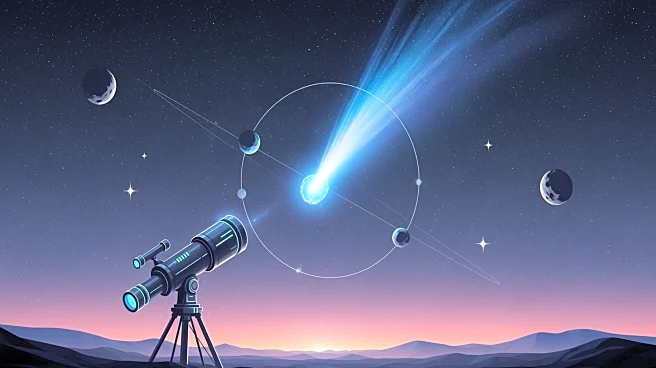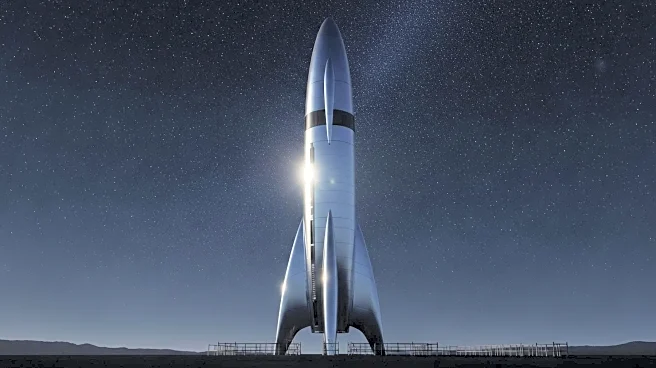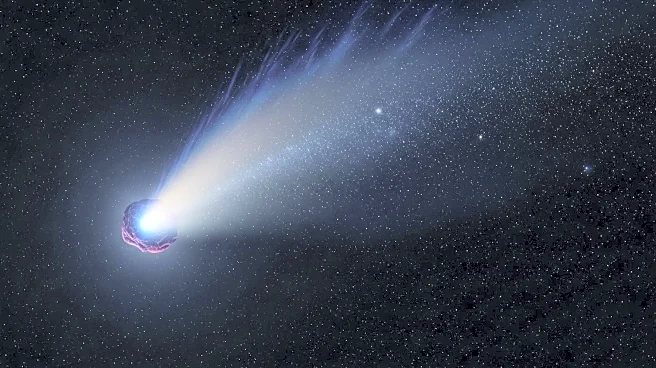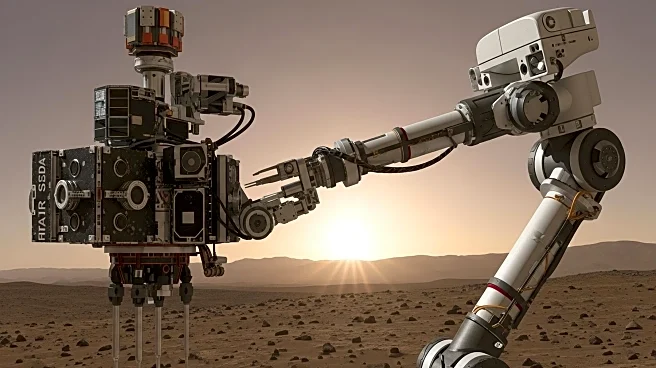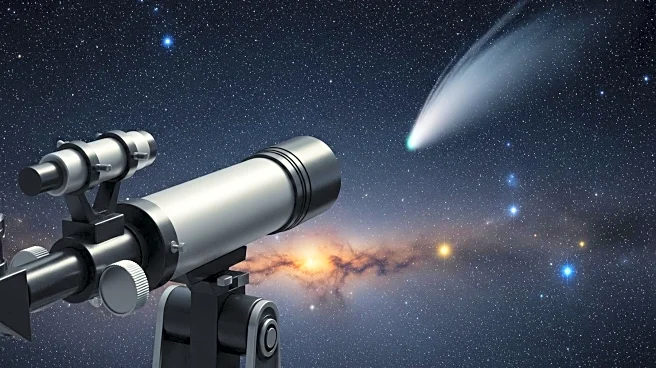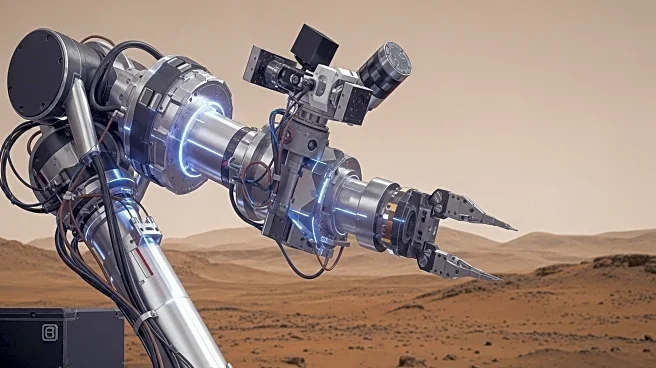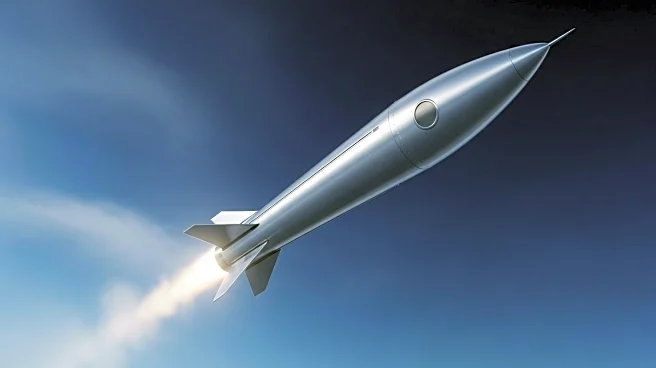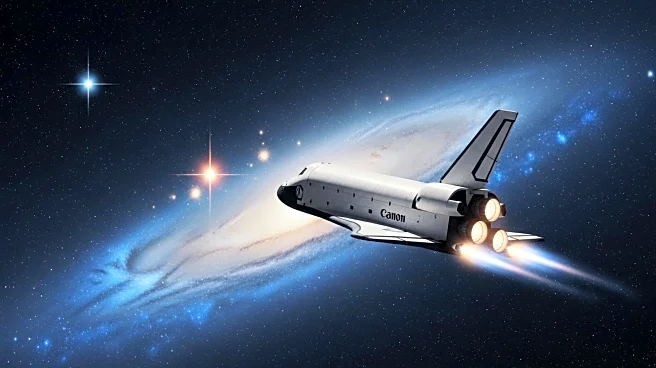What's Happening?
Harvard astrophysicist Avi Loeb has suggested that the interstellar object 3I/ATLAS, detected racing toward the Sun, could be alien technology. This object, moving at 245,000 kilometers per hour, is the fastest
known within the Solar System and is estimated to be up to 20 kilometers in diameter. Loeb's paper, posted on the arXiv preprint server, explores the possibility of 3I/ATLAS being an extraterrestrial spacecraft, similar to his previous hypothesis about 1I/ʻOumuamua in 2017. The object's unusual orbit, which brings it close to Venus, Mars, and Jupiter, raises questions about its origin.
Why It's Important?
The suggestion that 3I/ATLAS could be alien technology has significant implications for the scientific community and our understanding of interstellar objects. If proven, it would challenge existing theories about the nature of such objects and potentially open new avenues for research into extraterrestrial life. The idea of alien probes in our Solar System could influence future space exploration strategies and funding priorities, as scientists may prioritize the search for signs of alien technology.
What's Next?
Further observations and studies are needed to determine the nature of 3I/ATLAS. Scientists will likely focus on detecting any radio waves or signs of maneuvering that could indicate artificial origin. The scientific community may also refine methods for identifying and analyzing interstellar objects, enhancing our ability to detect potential alien probes in the future.
Beyond the Headlines
The debate over 3I/ATLAS highlights broader questions about the search for extraterrestrial life and the criteria used to identify alien technology. Ethical considerations may arise regarding the implications of discovering alien probes, including how humanity should respond to potential contact with extraterrestrial civilizations.


